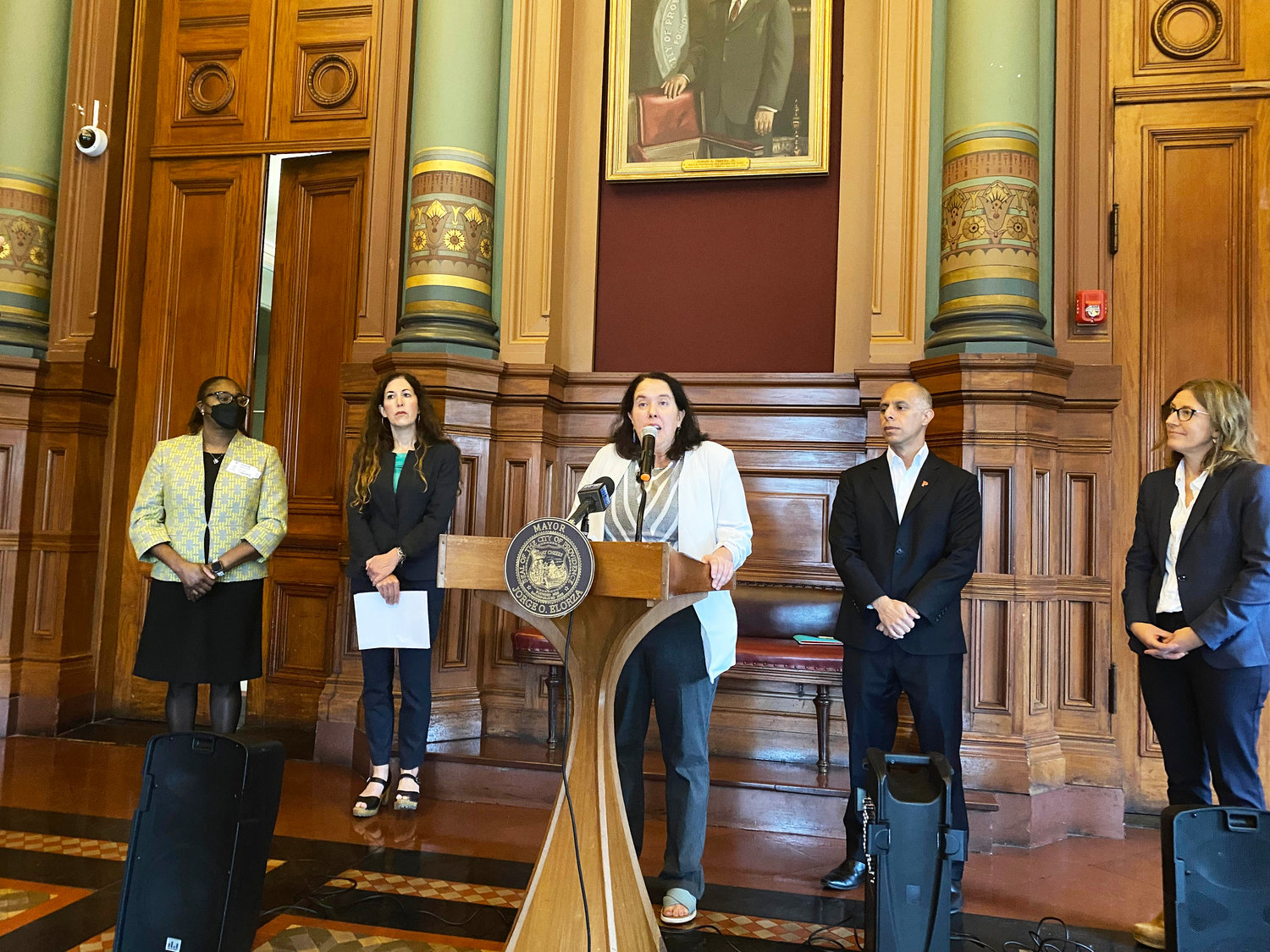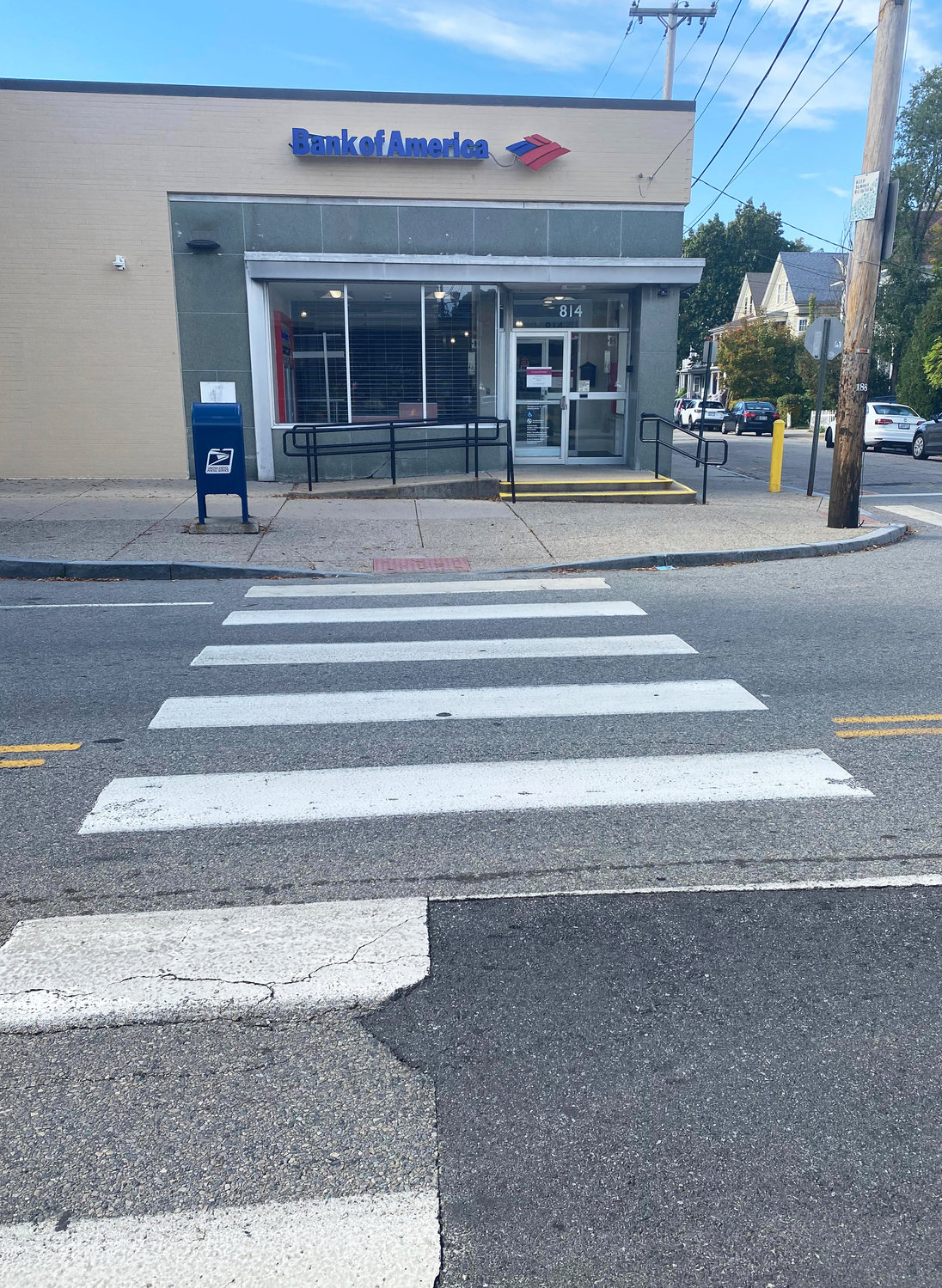We all live off Hope Street
A reckless driver, a near kiss from death – and a civics lesson about vitriol and the art of selling vapor ware
PROVIDENCE – On Thursday afternoon, Oct. 13, around 3 p.m., while attempting to cross Hope Street at the painted crosswalk between the CVS store and the Bank of America branch, I nearly became a tragic statistic: a pedestrian run down, mangled, and killed by a speeding car.
The car was traveling so fast – at least 40 miles an hour, probably more – that my entire body swayed in its slipstream as it shot past me. I barely managed to keep myself upright and not fall; I screamed loudly, in anger and in fright.
The driver – a middle-aged, white woman – sped away without ever slowing down, without braking, totally oblivious.
In the four days following that near kiss from death, I have found myself, at times, overwhelmed by a sudden rush of emotions. The reality is still sinking in that there was no way that I would ever been able to survive such a brutal collision; no way.
What saved me? Was it my current slowness in movement, being disabled, dependent on trekking poles? Was it my overly cautious behavior these days, approaching any intersection, looking both ways at least twice? What foreshadowing might have been at play to cause my last-minute hesitancy – and save my life?
The irony of my near-fatal accident on Hope Street was not lost on me, given all my current health care struggles to stay alive, battling an autoimmune disorder. After attending the 50th anniversary CODAC gala on Thursday evening, Oct. 6, at the Roger Williams Park Botanical Center, where I had been honored, I had struggled to make my way back to my parked car, forced to cling onto the metal fence surrounding the facility, to keep from falling down, my legs losing strength. [See link below to ConvergenceRI story, “Celebrating CODAC’s first 50 years.”]
The evening before, on Wednesday, Oct. 12, I had attended the Silent Spring Institute’s 2022 Gala Celebration, celebrating the 60th anniversary of the publication of Rachel Carson’s Silent Spring. [I had asked for – and graciously received – someone to accompany me back to my car after the event.] The evening featured a talk by Rebecca Altman, Ph.D., on “Rachel Carson the Advocate.” [See link to the story in this week’ edition, “Rachel Carson was right!”]
For all my attention focused on maintaining my own health – including getting my annual flu shot, getting the booster for my COVID vaccine, and scheduling follow-up appointments, and avoiding unnecessary stress – I had not imagined that the biggest threat to my life would come from a reckless, speeding driver on Hope Street.
Vitriol ascending
For the last few weeks, the traffic patterns along Hope Street on the East Side of Providence have been the focus of heated political discussions – although “discussions” does not seem to capture the fullness of the vitriol of the ongoing arguments revolving around a week-long pilot program, through which a designated bike lane had been created.
Twenty-four hours before my near kiss from death, on Wednesday afternoon, I had been shopping and running errands on Hope Street.
Vitriol was the exact word chosen by a storeowner on Hope Street to describe the tenor of controversy – and what she said had bothered her most about the “outrage” voiced by opponents.
As an act of kindness and courtesy, the storeowner had offered to carry my purchases back to my car, a block away, given my disabled condition.
The “vitriol” was puzzling to the storeowner. She said she personally favored the bike lane; it had not hurt her business. Most of her customers – and indeed, many of her neighboring businesses – supported the bike lane, she said. That is why, she continued, as we walked to my car, that she had found the injection of vitriol so surprising.
The kindness of strangers
On Thursday morning, at 9 a.m., several hours before I had ventured out again to shop on Hope Street, I had attended the news conference called by Providence Mayor Jorge Elorza at Providence City Hall where the Mayor – along with Bonnie Nickerson, executive director of the Providence Redevelopment Authority, Jennifer Hawkins, executive director of ONE Neighborhood Builders, Sharon Morris, executive director of the Omni Development Corporation, and Rachel Miller, Providence City Councilor, had announced the creation of the “Providence Neighborhood Land Bank,” in order to acquire and hold parcels for potential affordable housing sites.
What was remarkable about the initiative being launched in the waning days of the Elorza administration was the innovative way that the Providence Neighborhood Land Bank was being envisioned: with neighborhood residents being asked for their help in identifying potential abandoned lots. It was conceived as a place-based partnership – where neighbors, developers, city officials, and community development corporations could work with each other to help alleviate the affordable housing crisis, on a lot-by-lot basis.
Just getting to a news conference these days is a difficult endeavor, requiring forethought in action, figuring out where to park and how to navigate the entrance to City Hall. I had arrived in plenty of time, a half-hour early, and found a convenient parking spot – only to have a member of the R.I. General Assembly call me, wanting to talk “off the record” about some recent, curious budget developments.
As a result, now a bit rushed, I attempted to access City Hall through a short cut – what turned out to be an employee entrance, without luck. It had begun to rain, making the sidewalks slick. I began to trudge around the building, only to be stopped when a police officer came running after me, shouting.
The police officer working the security cameras inside City Hall had seen me struggling up the steps, using my trekking poles, and made the decision to intervene.
The officer then escorted me into the building, helped me to get signed in, escorted me to elevator, and then directed me to the room where the news conference was taking place.
The police officer explained that having seen me walk with my trekking poles had reminded him of service members who had been part of the mountain troops on skis, and he felt obligated to reach out to try to help what he thought might be a fellow veteran. Being dependent on the kindness of strangers, it turns out, is a great opportunity to make new connections.
Being seen, not being seen
There were no chairs set up in the Alderman’s chamber where the presser was being held,, and so I had asked a City Hall planning official if he would please be so kind to arrange for a chair upon which I could sit, in order to report on the news conference.
A couple of news reporters did take immediate notice of my arrival – including Steve Klamkin of WPRO and Steve Ahlquist of Uprise RI – both of whom came over to say hello. So, too, did Providence Mayor Jorge Elorza.
What occurred during the news conference, however, was disturbing: several reporters inadvertently bumped into me and “kicked” me, as if somehow I had become invisible and could no longer be “seen.” Oops, sorry!
Perhaps it was foreshadowing for what would happen a few hours later on the crosswalk on Hope Street.
A busy news day, filled with vitriol
Thursday was a busy news day, it turned out. It was the day of the latest televised public hearing by the January 6 Committee investigating the armed attack on the U.S. Capitol.
In Rhode Island, it was the second of two gubernatorial debates last week between Gov. Dan McKee and Republican challenger Ashley Kalus, the first on Tuesday night, Oct. 11, by WPRI-TV, and the second on Thursday evening, sponsored by The Providence Journal and The Public’s Radio.
As a result, the airwaves had been inundated with a series of negative TV ads from the rival camps.
One ad, from Gov. Dan McKee, attracted a lot of attention from talk radio hosts Tara Granahan and John DePetro, who went to great lengths to attack one of the people featured in the ad, Holly, claiming that her Rhode Island accent was an actor’s performance, and was not “real.”
Turns out I have known Holly since 2014, for eight years. How her voice sounded in the TV ad is exactly what she sounds like when she talks.
In a Twitter response to Councilwoman Nicole Renzulli, I wrote: “Sorry, Nicole. Holly’s accent is for real, as she is a very real person whom I know.”
In a Twitter response to John DePetro I wrote: “John, you are wrong; that’s the way that Holly talks; she’s real, so is her accent; you are completely wrong here, not that you will ever admit to being wrong.”
Translated, a number of folks who seem to dwell in the Rhode Island echo chamber that is talk radio, kept claiming that Holly’s Rhode Island accent was not authentic.
Not one of them knows Holly, personally. I do. Not one had ever spoken to Holly in person or had a conversation with her. No matter. The very next morning, on Friday, WPRO’s Tara Granahan was doubling down on her radio show, claiming that somehow Holly didn’t sound like Holly.
Once more, with gusto
Last week, The New York Times published a news story, “As Overdoses Soar, Rhode Island Embraces a Daring Addiction Strategy.”
The story seemed to attract attention from other media sources in Rhode Island, including WPRI’s Ted Nesi. Why?
The work to create a harm reduction center in Rhode Island, championed by Project Weber/Renew, among others, including RICARES, has been the focal point of advocacy for years by many in the recovery community: the work has been promoted at the Rally4Recovery, it was talked about at CODAC’s celebration of its first 50 years, which was attended by RI Attorney General Peter Neronha, Gov. Dan McKee, House Speaker Joseph Shekarchi, and Senate President Ruggerio.
Point of order
In the last month alone, ConvergenceRI has published two stories by Ian Knowles, “Entering the fourth wave of the opioid epidemic,” and “Opioid OD crisis is not an unsolvable problem.” [See links below to ConvergenceRI stories.]
The problem, it seems, is the apparent lack of bandwidth by some within the Rhode Island news media, and how political reporting is defined.
Which gets us back to the reckless driver who blew through a crosswalk and nearly killed me: What if the problem was redefined – it was not the bike riders or bike path promoters who were being “problematic,” but rather, bad drivers in Rhode Island?
Similarly, I found it hard to believe that I was actually arguing with people on Twitter who had never met Holly, who had never in their life had a conversation with her, who were busy claiming that what she sounded like in the TV ad was not a realistic portrayal of her voice – as if it were some kind of act.
In the business world of innovation, there was a polite term that was often used to describe such purveyors: they were said to be selling “vapor ware.” Translated, they were selling hot air.







